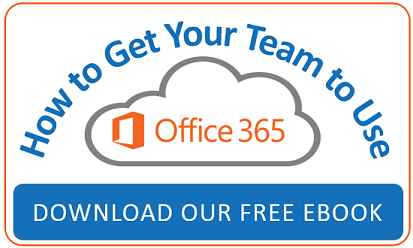 More and more small to mid-sized businesses are moving to the Managed Service Provider model in order to save money and improve productivity.
More and more small to mid-sized businesses are moving to the Managed Service Provider model in order to save money and improve productivity.
Why? With the average pay of an IT Technician nationally at $36K and for a Network Administrator the average being $56K and ranging to $78K, having a full-time person on staff can be costly.
The many upsides to managed IT services
You can compare this to a range of MSP rates of $120 - $175 per month per user at a SMB. For a business with 10 employees, even at the high range it might cost $38,500 per year for an MSP provider to keep things running. Also, hiring and retaining highly specialized people that are outside of your personal expertise as a manager can be difficult.
This analysis doesn’t include the additional benefit that moving to the MSP model from the Break-Fix model reduces the risk of downtime and can improve day to day company performance by reducing lags in IT system performance that slows employees down and inhibits productivity.
If the MSP model is so great, why is it just now taking off? MSPs take responsibility for 24-7 monitoring of servers, networks PC’s, laptops and sometimes mobile devices. The ability to remotely monitor and manage the upkeep of these devices was, until recently, only available to the Enterprise. Smaller businesses who relied on outside IT support services had to rely on these service providers coming on-site to review systems, install patches, verify that backups were occurring and the like. Many small businesses simply went with the Break-Fix model instead of paying the high cost of on-site pro-active maintenance.
More recently, cloud software that enables remote monitoring and maintenance of a wide range of IT devices and operating systems has enabled smaller VAR’s to cost-effectively provide proactive services that compare favorably with the old break-fix model.

Because more small companies are relying on IT to 'keep the lights on' for important applications such as eMail, ERP and CRM, companies that don't maintain things like patches, backups and security can run into real problems when things don’t work as they should.
Clients lose that in-house resource
Unfortunately, one of the prices that small to mid-market companies pay for not having a dedicated IT person in house is that this person often provided employees with support beyond the purview of typical IT services. These 'jack of all trades' types often were invisibly helping people over productivity hurdles with in-house custom software or even commonly used business applications such as MS Word, Excel, Powerpoint and SharePoint.
In order to manage their own costs and ensure the profitability necessary to remain in business, most MSPs will utilize an SLA (Service Level Agreement) which will proscribe what services they offer and what are not covered.
We did a quick online survey of SLA’s to see if they commonly included deskside support as well as support for commonly used business software. What we found was that actual SLAs in place as well as templated SLAs available for reference include the following terms with respect to Desktop Support.
- Desktop Support will assist in finding documented solutions to end-users requests regarding features and functions of supported software.
- Clients should refer to help resources, such as Google, Microsoft, Apple, Knowledge Base articles, Lynda.com, etc. for help using software applications; Desktop Support will be as helpful as possible, but they are not software experts or trainers.
- Desktop Support staff will provide assistance for software that is not launching or functioning properly.
- Initial investigation will be undertaken by Desktop Support staff to determine if the issue is system- or network-related.
- Desktop Support staff does not provide tutorials or training in the use of applications, but can assist users by directing them to the help systems provided within applications or to appropriate online resources.
- Ensure Microsoft Office Applications are functioning as designed
Mind the gap
This means that there is a likely gap occurring between what employees are used to getting for support, and what the shift to MSP solutions provides. For forward thinking MSP providers this creates an opportunity. If you can include some type of deskside support for business software in your SLA, you can significantly differentiate your solution as well as upsell for more revenue.
But how is an MSP going to provide something as complex as support for commonly used business applications without the cost of putting people back on to a customer's site to be at the deskside? What happens as the software itself moves to the cloud, as with Microsoft Office 365?
Really?!?
I have to laugh at SLA language such as this:
"Clients should refer to help resources, such as Google, Microsoft, Apple, Knowledge Base articles, Lynda.com, etc. for help using software applications"
Obviously, this is not the most helpful or efficient way to get and keep employees productive. Do you really want your employees Googling and bouncing from site to site trying to figure out how to use Excel? Or getting lost in YouTube videos for hours?
One answer is to provide affordable, online 24/7 access to software training and software experts. These solutions exist...don't reinvent the wheel, just resell the wheel! 






